What is considered a dangerous body temperature. Dangerous Body Temperature: Understanding Fever Thresholds and Health Risks
What is considered a dangerous body temperature. How high can a fever go before it becomes a serious health concern. When should you seek medical attention for a high fever. What are the symptoms and causes of dangerously high body temperatures.
What Constitutes a High Body Temperature?
Body temperature varies from person to person and fluctuates throughout the day. However, a temperature of 38°C (100.4°F) or above is generally considered a fever. But when does a fever become dangerous?
A mild fever (38-38.9°C or 100.4-102°F) is usually not cause for concern in adults. It’s often a sign that your body is fighting an infection. Moderate fevers (39-39.9°C or 102.2-103.8°F) may require more attention, while high fevers (40°C or 104°F and above) can be potentially dangerous and may necessitate medical intervention.
Understanding Normal Body Temperature
Normal body temperature typically ranges between 36-36.8°C (96.8-98.2°F). It’s important to note that ‘normal’ can vary slightly for each individual and can be influenced by factors such as time of day, physical activity, and hormonal changes.

Recognizing the Signs of a Dangerous Fever
While fever itself is often not dangerous, extremely high temperatures or prolonged fevers can lead to complications. How can you recognize when a fever becomes potentially dangerous?
- Temperature of 40°C (104°F) or higher
- Fever lasting more than three days
- Severe headache unrelieved by pain medication
- Difficulty breathing
- Confusion or extreme drowsiness
- Stiff neck and sensitivity to light (possible signs of meningitis)
If you experience any of these symptoms alongside a high fever, it’s crucial to seek medical attention promptly.
Causes of Dangerously High Body Temperatures
Understanding the underlying causes of extremely high fevers can help in recognizing potentially serious conditions. What are some common causes of dangerously high body temperatures?
- Severe infections (e.g., pneumonia, sepsis)
- Heat-related illnesses (heat exhaustion, heatstroke)
- Certain medications
- Thyroid storm (a life-threatening condition related to hyperthyroidism)
- Malignant hyperthermia (a rare genetic disorder)
In some cases, a dangerously high fever may be the result of an underlying medical condition that requires immediate attention.

Measuring Body Temperature Accurately
Accurate temperature measurement is crucial for assessing fever severity. How can you ensure you’re getting a reliable reading?
Different methods of temperature measurement can yield varying results. Rectal temperatures are considered the most accurate, followed by oral and tympanic (ear) measurements. Axillary (armpit) temperatures are generally the least precise.
Tips for Accurate Temperature Measurement
- Use a reliable, calibrated thermometer
- Follow the manufacturer’s instructions carefully
- For oral temperatures, wait at least 15 minutes after eating or drinking
- For tympanic temperatures, ensure the ear canal is clear
- Take multiple readings to confirm the result
Treatment Approaches for High Fevers
While mild to moderate fevers often don’t require specific treatment beyond comfort measures, dangerously high fevers may necessitate medical intervention. How are high fevers typically managed?
For fevers below 39°C (102.2°F), self-care measures are often sufficient:

- Rest and stay hydrated
- Use over-the-counter fever reducers like acetaminophen or ibuprofen as directed
- Apply cool compresses or take a lukewarm bath
For dangerously high fevers or those accompanied by severe symptoms, medical treatment may include:
- Intravenous fluids to prevent dehydration
- Prescription medications to address the underlying cause
- In extreme cases, cooling blankets or ice packs may be used
Complications of Extremely High Body Temperatures
Prolonged exposure to dangerously high body temperatures can lead to severe complications. What are the potential risks associated with extremely high fevers?
- Dehydration
- Hallucinations
- Seizures
- Organ damage
- Brain damage (in rare, extreme cases)
These complications underscore the importance of monitoring high fevers closely and seeking medical attention when necessary.
Special Considerations for Vulnerable Populations
Certain groups may be more susceptible to complications from high fevers. Who should be especially vigilant about monitoring body temperature?
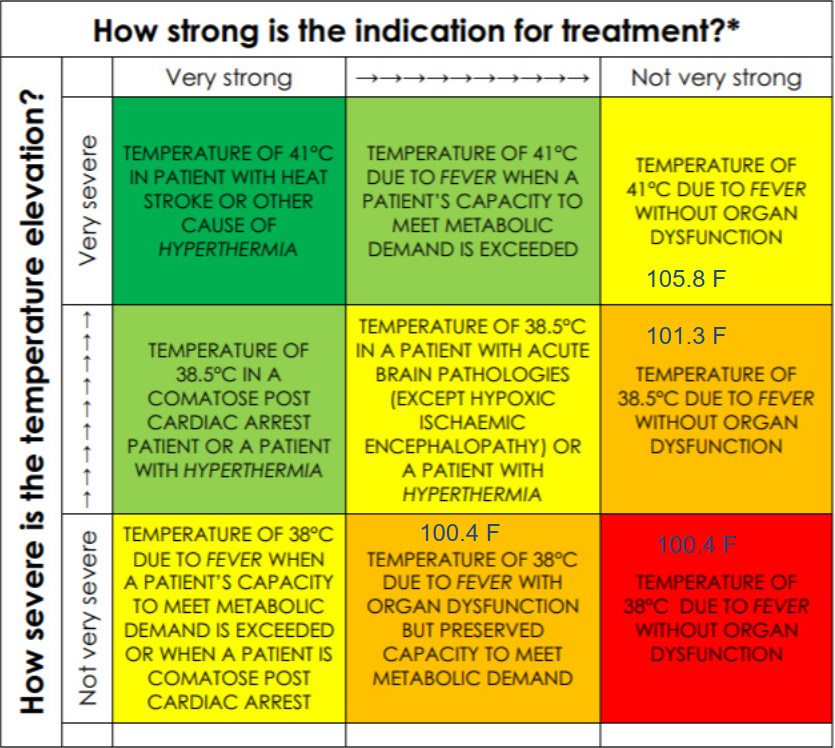
- Infants and young children
- Elderly individuals
- Pregnant women
- People with compromised immune systems
- Those with chronic medical conditions
For these populations, even a moderately high fever may warrant medical attention, as their bodies may be less equipped to handle the stress of elevated temperatures.
Fever in Infants and Young Children
Fever in infants, especially those under 3 months, should always be taken seriously. For babies this young, a rectal temperature of 38°C (100.4°F) or higher requires immediate medical attention. For older infants and children, other symptoms and the child’s behavior are important factors to consider alongside the temperature reading.
Preventing Dangerously High Body Temperatures
While not all fevers can be prevented, there are steps you can take to reduce the risk of developing dangerously high body temperatures. How can you protect yourself from extreme temperature elevations?
- Practice good hygiene to prevent infections
- Stay up-to-date on vaccinations
- Avoid excessive sun exposure and heat
- Stay hydrated, especially in hot weather
- Be aware of medication side effects that may cause fever
By taking these precautions, you can help minimize the risk of developing fevers that could potentially reach dangerous levels.
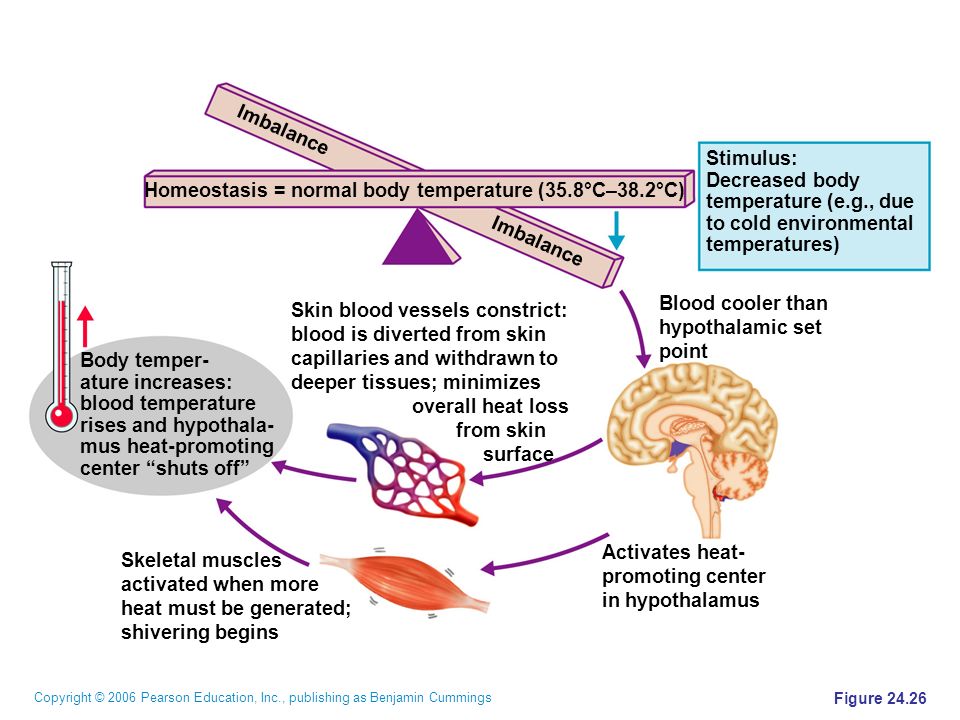
When to Seek Emergency Medical Care
Recognizing when a fever requires emergency attention can be life-saving. What are the red flags that indicate you should seek immediate medical care?
- Temperature of 40°C (104°F) or higher that doesn’t respond to home treatment
- Fever accompanied by severe headache, stiff neck, and light sensitivity
- Fever with confusion, difficulty breathing, or chest pain
- Fever in an infant under 3 months old
- Fever in someone with a compromised immune system
In these situations, don’t hesitate to seek emergency medical attention, as prompt treatment can prevent serious complications.
Understanding Fever’s Role in the Body
While high fevers can be concerning, it’s important to understand that fever itself is often a beneficial response. Why does the body increase its temperature during illness?
Fever is part of the body’s immune response to infection. The elevated temperature can:
- Slow the growth and reproduction of bacteria and viruses
- Enhance the body’s immune system function
- Increase the production of disease-fighting white blood cells
However, when fever reaches dangerously high levels, the potential risks can outweigh these benefits, which is why monitoring and appropriate management are crucial.

Myths and Misconceptions About Fever
There are many common misconceptions about fever that can lead to unnecessary worry or inappropriate treatment. What are some of the most prevalent myths about fever?
- Myth: Fever itself can cause brain damage. Reality: Fever alone does not cause brain damage. However, extremely high temperatures (typically above 42°C or 107.6°F) can potentially lead to complications.
- Myth: All fevers need to be treated with medication. Reality: Mild to moderate fevers often don’t require treatment beyond comfort measures.
- Myth: The higher the fever, the more serious the illness. Reality: The severity of an illness doesn’t always correlate with the height of the fever.
- Myth: Bundling up will help “break” a fever. Reality: Excessive bundling can actually make a fever worse by preventing heat dissipation.
- Myth: Fever always indicates a bacterial infection that needs antibiotics. Reality: Many fevers are caused by viral infections, which don’t respond to antibiotics.
Understanding these myths can help you approach fever management more effectively and reduce unnecessary anxiety.
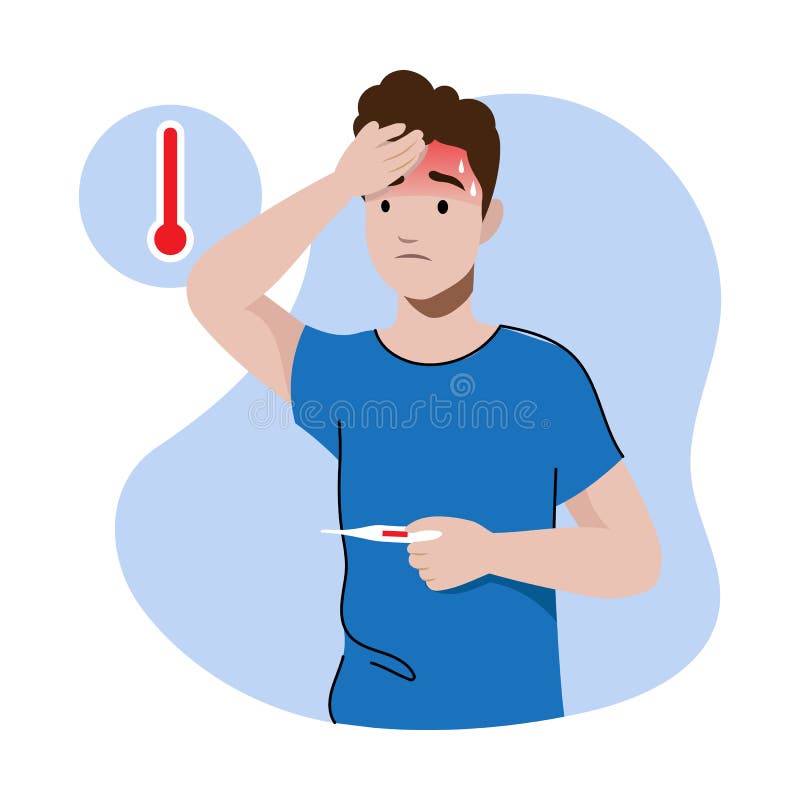
The Impact of Climate and Environment on Body Temperature
External factors can significantly influence body temperature, sometimes leading to dangerously high levels. How do environmental conditions affect our body’s ability to regulate temperature?
In hot and humid environments, the body may struggle to dissipate heat effectively, potentially leading to heat-related illnesses. Conditions such as heat exhaustion and heatstroke can cause body temperatures to rise to dangerous levels, even in the absence of infection.
Recognizing Heat-Related Illnesses
- Heat exhaustion symptoms: Heavy sweating, weakness, cold and clammy skin, fast and weak pulse, nausea or vomiting
- Heatstroke symptoms: High body temperature (40°C or 104°F or higher), hot and dry skin, rapid and strong pulse, possible unconsciousness
Being aware of these symptoms and taking preventive measures in hot environments can help avoid potentially dangerous elevations in body temperature.
Technological Advances in Temperature Monitoring
As technology continues to evolve, new methods for monitoring body temperature are emerging. What innovative approaches are being developed to track and manage fever?

- Wearable devices that continuously monitor body temperature
- Smart thermometers that can track temperature trends over time
- Non-contact infrared thermometers for quick and hygienic measurements
- Smartphone apps that help interpret temperature readings and provide guidance
These advancements may offer more accurate and convenient ways to monitor body temperature, potentially allowing for earlier detection of dangerously high fevers.
The Role of Fever in Different Medical Conditions
While fever is often associated with infectious diseases, it can also be a symptom of various other medical conditions. How does fever manifest in different health scenarios?
- Autoimmune disorders: Conditions like rheumatoid arthritis or lupus can cause periodic fevers.
- Cancer: Some types of cancer, particularly blood cancers, can cause persistent low-grade fevers.
- Medications: Certain drugs can induce fever as a side effect.
- Hormonal disorders: Conditions affecting the thyroid or other endocrine glands can sometimes cause fever.
Understanding these different contexts can help in interpreting the significance of a fever and determining when it might indicate a more serious underlying condition.
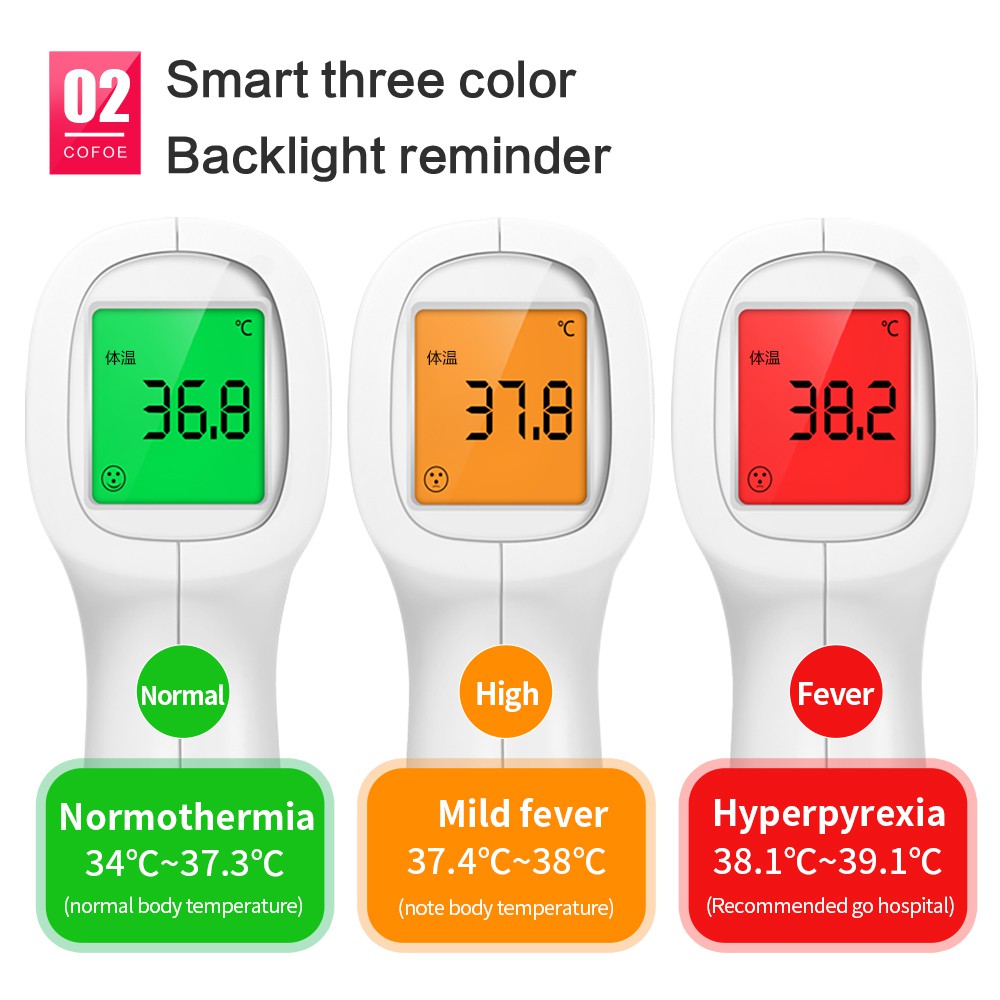
Global Perspectives on Fever Management
Approaches to fever management can vary across different cultures and healthcare systems. How do perspectives on dangerous body temperatures differ around the world?
In some cultures, fever is viewed more positively as the body’s natural healing process, leading to less aggressive treatment of mild to moderate fevers. In contrast, other societies may tend to treat fevers more proactively, even at lower temperatures.
These cultural differences can influence when people seek medical care for fevers and how healthcare providers approach fever management. However, there is general global consensus on the need for medical attention for very high fevers, especially when accompanied by severe symptoms.
Future Directions in Fever Research and Management
As our understanding of fever and its mechanisms continues to grow, new approaches to managing dangerously high body temperatures are being explored. What are some promising areas of research in fever management?

- Development of more targeted antipyretic medications with fewer side effects
- Research into the role of the hypothalamus in temperature regulation
- Exploration of the relationship between fever and the gut microbiome
- Investigation of novel cooling techniques for managing dangerously high fevers
These areas of research may lead to more effective strategies for managing high fevers and preventing associated complications in the future.
Educating the Public About Fever Safety
Public education plays a crucial role in promoting appropriate fever management and preventing complications from dangerously high body temperatures. How can we improve public understanding of fever?
- Develop clear, accessible guidelines for recognizing and managing fever
- Promote awareness of the signs that indicate a need for medical attention
- Educate about proper use of fever-reducing medications
- Encourage understanding of fever’s role in the immune response
By improving public knowledge about fever, we can help ensure that people respond appropriately to elevated body temperatures, seeking medical care when necessary while avoiding unnecessary interventions for mild fevers.

The Psychological Impact of Fever Anxiety
The fear of fever, particularly high fever, can have significant psychological effects. How does anxiety about fever impact health-seeking behaviors and overall well-being?
Fever phobia, or an excessive fear of fever, is common, especially among parents of young children. This anxiety can lead to:
- Overuse of fever-reducing medications
- Unnecessary medical visits
- Increased stress and sleep disturbances
- Potential neglect of other important symptoms
Addressing these psychological aspects is an important part of comprehensive fever management. Providing accurate information and reassurance can help alleviate excessive anxiety while still promoting appropriate caution for truly dangerous fevers.
As we continue to advance our understanding of fever and its implications, it’s clear that a balanced approach is key. Recognizing the body’s natural defense mechanisms while remaining vigilant for signs of dangerously high temperatures allows for effective management of fever across various scenarios. By staying informed and attentive, we can navigate the complexities of body temperature regulation and ensure timely intervention when necessary.
High temperature (fever) in adults
What is a high temperature?
Normal body temperature is different for everyone and changes during the day.
A high temperature is usually considered to be 38C or above. This is sometimes called a fever.
Check if you have a high temperature
You may have a high temperature if:
- your chest or back feel hotter than usual
- you have other symptoms, such as shivering (chills), sweating or warm, red skin (this may be harder to see on black or brown skin)
- a thermometer says your temperature is 38C or above
Important
If you feel hot or shivery, you may have a high temperature even if a thermometer says your temperature is below 38C.
Do I need to take my temperature?
You do not need to take your temperature using a thermometer, but you can if you have one.
Make sure you use it correctly to help get an accurate result. See how to take a temperature.
Treating a high temperature
There are some things you can do to help treat a high temperature.
Do
get lots of rest
drink plenty of fluids (water is best) to avoid dehydration – drink enough so your pee is light yellow and clear
take paracetamol or ibuprofen if you feel uncomfortable
Information:
Try to stay at home and avoid contact with other people until you do not have a high temperature.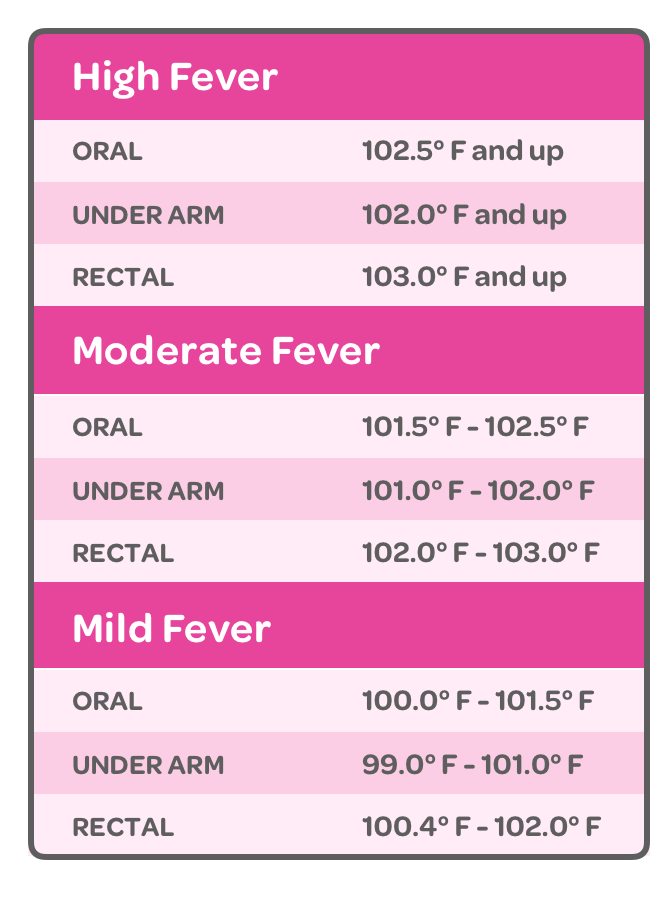
Urgent advice: Ask for an urgent GP appointment or get help from NHS 111 if you have:
- a high temperature and you’ve been treating it at home but it’s not getting better or is getting worse
You can call 111 or get help from 111 online.
Causes of a high temperature
Many things can cause a high temperature. It’s not usually a sign of anything serious.
It’s often just caused by your body fighting an infection, such as a cold or flu.
Sometimes it could be a sign of something more serious if your temperature is very high or will not come down.
Information:
Advice for children
This page is for adults. For advice about children, see high temperature (fever) in children.
Page last reviewed: 24 May 2023
Next review due: 24 May 2026
Fever in adults – HSE.ie
This page has general information about fever in adults. If you have a child with a fever, see the page on fever in children.
Normal body temperature is usually between 36 and 36.8 degrees Celsius.
A high temperature or fever is when your body temperature is 38 degrees Celsius or higher. It can be a sign that you are unwell. It usually means you have an infection, such as a cold. But it can also be due to more serious infections, such as COVID-19 (coronavirus).
Prevent the spread of COVID-19
A high temperature of 38 degrees Celsius or above can be a symptom of COVID-19.
Symptoms of COVID-19 and what to do
A fever is usually caused by your body fighting a viral or bacterial infection. It usually lasts around 3 to 5 days. Most people recover from a mild fever with self-care at home.
It usually lasts around 3 to 5 days. Most people recover from a mild fever with self-care at home.
Symptoms
Your symptoms will depend on the type of fever you have.
Mild fever (38 to 38.9 degrees Celsius)
With a mild fever, you might:
- have flushed cheeks
- feel tired
- be warm to the touch
You will usually be able to carry out normal daily activities.
High fever (39 to 39.9 degrees Celsius)
With a high fever, you might:
- feel hot to the touch
- not feel well enough to go to work
- have aches and pains
Very high fever (40 degrees Celsius or higher)
With a very high fever, you will usually want to stay in bed or be inactive. You will not feel well enough to carry out normal activities. You’ll feel hot to the touch and you may have lost your appetite.
You will not feel well enough to carry out normal activities. You’ll feel hot to the touch and you may have lost your appetite.
When to see a GP
Most older infants, children and adults do not need medical treatment for a mild fever.
You should contact your GP if you:
- have a very high fever (40 degrees Celsius or higher)
- are still feverish after 3 days of home treatment or seem to be getting sicker
- are shivering or cannot stop shaking, or have chattering teeth, and it does not stop within an hour or so
- have a severe headache that does not get better after taking painkillers
- are having trouble breathing
- are getting confused or are very drowsy
- have travelled overseas recently
Urgent advice: Contact your GP immediately if
you have a fever and notice the following symptoms:
- severe headache
- stiff neck
- sensitivity to light
These symptoms may be a sign of meningitis.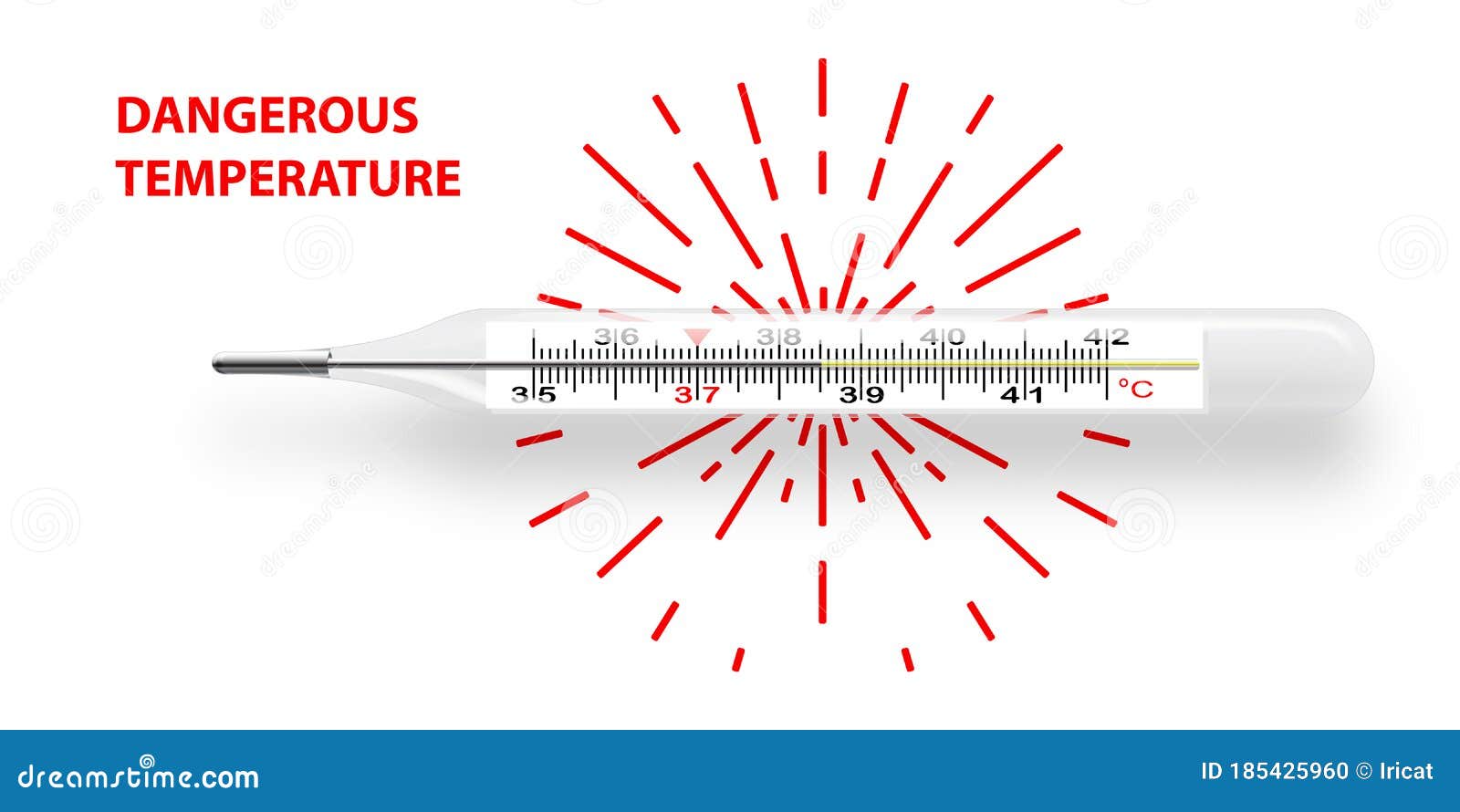 This needs urgent medical attention.
This needs urgent medical attention.
Young babies and pregnant women
Babies under 3 months with a fever must see a GP. If your baby is between 3 and 6 months and has a high or very high fever, contact your GP.
Fever in babies and children
If you are pregnant and have a temperature of 38.5 degrees Celsius, or any fever lasting for 3 days or more, see your GP. They need to monitor the effects of the fever on your baby.
Causes of fever
Fever is usually caused by a viral or bacterial infection. Fever is your body’s way of fighting infection. Raising your body temperature helps to kill the virus or bacteria.
Common conditions that can cause fevers include:
- respiratory tract infections
- flu (influenza) and flu-like conditions
- colds
- tummy bugs (gastroenteritis)
- ear infections
- infection of your tonsils (tonsillitis)
- kidney or urinary tract infections
Common childhood illnesses that can cause fevers include:
- chickenpox
- scarlet fever
- rubella (German measles)
- whooping cough
- rheumatic fever
You might have a mild fever after getting a vaccine.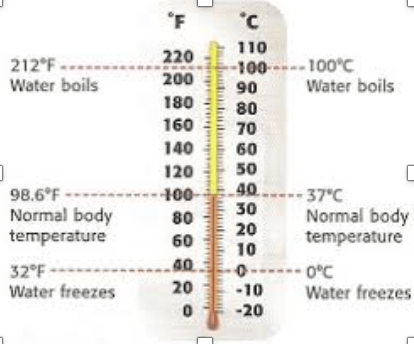 Adults should not take paracetamol before or after getting a vaccine. It may make the vaccine less effective.
Adults should not take paracetamol before or after getting a vaccine. It may make the vaccine less effective.
Treatment
Medicine is not needed for a mild fever. You can use paracetamol if you also have a headache, pain or distress.
Managing a fever yourself
Drink plenty of fluids, especially water (little and often is best). Try to drink 2 to 3 litres in 24 hours while you have a fever. This will reduce the risk of dehydration.
Do
get plenty of rest
make sure the room temperature is comfortable – not too hot or too cold
open a window for ventilation if you can, but avoid draughts
wear lightweight clothing and use lighter bedding
use a cool cloth to wash your face, hands and neck
change bed linen and clothing regularly
Content supplied by the NHS and adapted for Ireland by the HSE
Page last reviewed: 28 February 2023
Next review due: 28 February 2026
This project has received funding from the Government of Ireland’s Sláintecare Integration Fund 2019 under Grant Agreement Number 123.
The temperature has risen. What you need to know
37.0 — is this already a disease? When should you take an antipyretic? Can heat kill? Why is it advised to eat less at a temperature? We analyze popular questions
Usually we consider a fever a sign of SARS, influenza or other infectious disease. However, it can also jump after vaccination, although there is no infection in the body. Deviations from the temperature norm have dozens of reasons. To understand why this happens, it is worth learning more about the thermoregulation of our body.
In 1851, the German physician and scientist Karl Wunderlich summarized the results of a million temperature measurements in the armpits of patients and for the first time established the normal limit of 37°C, or 98.6°F. He also put into practice regular measurements of the temperature of patients and argued that fever (fever) is not the disease itself, but its symptom.
However, later studies revised Wunderlich’s estimate and reduced the rate to 36. 6°C. This was due not so much to the scientist’s mistakes as to the improvement in the quality of life. Wunderlich lived in an era when the average life expectancy was 38 years, and many people suffered from chronic infections such as tuberculosis, syphilis and periodontitis. A high level of systemic inflammation in the body could lead to such a norm.
6°C. This was due not so much to the scientist’s mistakes as to the improvement in the quality of life. Wunderlich lived in an era when the average life expectancy was 38 years, and many people suffered from chronic infections such as tuberculosis, syphilis and periodontitis. A high level of systemic inflammation in the body could lead to such a norm.
At the same time, the temperature norm also depends on the place of measurement: in the armpit – it is 36.6 ° C, in the anus and vagina – 37.5 ° C; in the mouth – 37.0 ° C. By the way, the axillary method is considered the least accurate, but it has entered hospital practice as the simplest and most hygienic. For example, in the United States at home, a thermometer is placed in the mouth. But not any thermometer is suitable for this, you need a special one.
No. The temperature depends on daily biological cycles (at night and in the morning it is lower than during the day and in the evening), physical and mental activity, emotional state (fear, stress), and ambient temperature.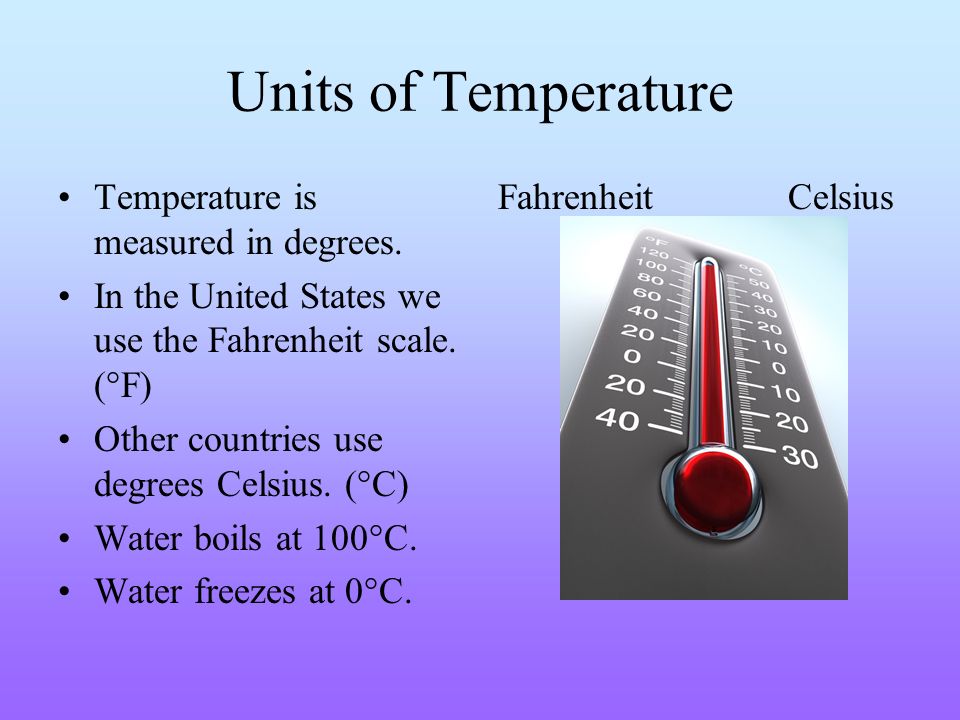 Also, temperature regulation is disturbed by drug and alcohol intoxication. A constant temperature of 37.2 ° C can be in women during the period of ovulation and in pregnant women. Therefore, it is important to measure the temperature, if possible, in a calm, unexcited state.
Also, temperature regulation is disturbed by drug and alcohol intoxication. A constant temperature of 37.2 ° C can be in women during the period of ovulation and in pregnant women. Therefore, it is important to measure the temperature, if possible, in a calm, unexcited state.
Without illness or other physiological disturbances, the temperature will not exceed 37.2°C. But then begins what experts call subfebrile (from the Latin febris – fever) temperature – from 37.2 to 37.8 or even 38.0 ° C. Usually she speaks of a sluggish inflammatory process, that the body is fighting infections, and other disorders.
Subfebrile temperature can be distinguished by other signs of the disease – weakness, headache, sweating and body aches.
Yes, but not only. Subfebrile temperature can be observed in hundreds of different conditions. These can be various kinds of infections (for example, this is one of the symptoms of early tuberculosis), poisoning, dental diseases, allergic reactions, latent autoimmune diseases and chronic pathologies.
The temperature within these limits can also increase after receiving a dose of ionizing radiation of 2 to 4 Gy, against the background of hormonal changes in women during menopause. With prolonged or very acute stress, the body can also respond with an increase in temperature – this condition is called psychogenic fever, or thermoneurosis.
It is worth noting that such a temperature in itself does not harm the body. It is simply a tool the body uses to deal with real or imagined threats. For example, an increase in temperature after vaccination is considered a variant of the norm: the body thinks that it is being attacked, and just in case, it “alarms” all defenses.
Infectious agents such as viruses, bacteria and fungi do not live comfortably at certain temperatures. Let’s say 37.0 is already above the average annual temperature of any place on Earth, including the Sahara and the South American tropics. And the higher the column crawls, the worse it is for microorganisms.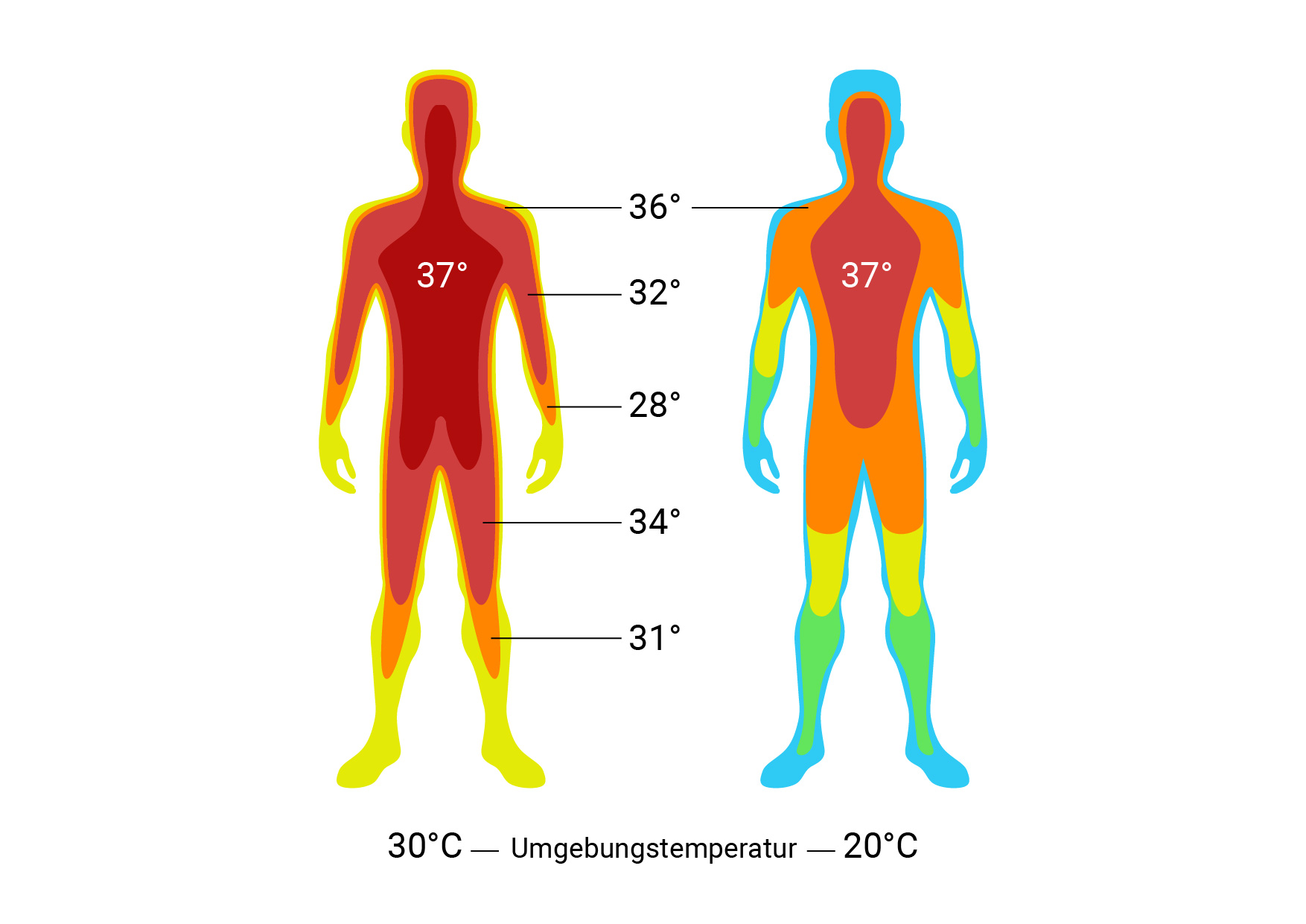 For example, biologist Arturo Casadevall studied the temperature preferences of 4,082 species of lower fungi. It turned out that less than a third survive at temperatures above 37°C, and only five percent grow at 41°C.
For example, biologist Arturo Casadevall studied the temperature preferences of 4,082 species of lower fungi. It turned out that less than a third survive at temperatures above 37°C, and only five percent grow at 41°C.
An increase in temperature is an element of non-specific (aimed at a wide range of threats) immunity. The hypothalamus, located at the base of the brain, is responsible for temperature regulation. It responds to signals from biochemical substances floating in the blood, called pyrogens (from other Greek πῦρ – “fire”). At elevated temperatures, metabolic processes are faster, and therefore the action of immune cells is accelerated.
Pyrogens are secreted mainly by cells of the immune system (monocytes, macrophages, T- and B-lymphocytes). When the hypothalamus detects them, it tells the body to generate and retain more heat, causing a fever. In children, the temperature usually rises faster because their immune system is still immature.
It should be said right away that mercury thermometers in Russia have been banned for production since 2020. This is due to the fact that in 2014 Russia signed the Minamata Convention on Mercury, which requires the production, export and import of goods containing mercury and mercury compounds to be stopped.
This is due to the fact that in 2014 Russia signed the Minamata Convention on Mercury, which requires the production, export and import of goods containing mercury and mercury compounds to be stopped.
The advantages of mercury thermometers are their high accuracy (0.1°C error) and reliability. Mercury expands itself due to heat, does not require batteries and microcircuits. But these benefits are outweighed by the health risks posed by mercury vapor from a broken appliance.
Electronic thermometers are more “capricious”, although formally their accuracy is the same. They use a thermal sensor, so they need to be pressed closer to the body – and it is best to measure them orally or rectally. If you do not change the battery in time, the device will begin to “lie”.
But infrared thermometers have lower accuracy. This is due to the fact that the measuring beam passes through the air, which has its own temperature, and this distorts the result (up to 0.2°C). But it gives the result in a matter of seconds, and is convenient when you need to identify a febrile temperature.
A medical thermometer usually ends at 45°C. At 42°C, irreversible decomposition of proteins in the body begins, at 43°C, denaturation (thermal decay) of proteins in brain neurons, which leads to inhibition of brain functions, coma and death.
But even a temperature above 38°C (it is called febrile) is already quite difficult for the body. Blood pressure rises, heart rate rises, the number of decay products of bacteria in the blood increases, which can cause symptoms of poisoning and disrupt brain function (hence hallucinations).
Consequences of prolonged fever may include fainting, heart and kidney failure, dehydration, digestive and nervous system disorders.
As we found out, the temperature helps to fight the disease. Therefore, doctors usually advise taking antipyretics only when the temperature exceeds 38-38.5 ° C. But it depends on the state of the person himself, on how he tolerates the fever. In this case, an overdose of the drug can cause serious damage to the liver, kidneys, gastrointestinal tract, heart and brain.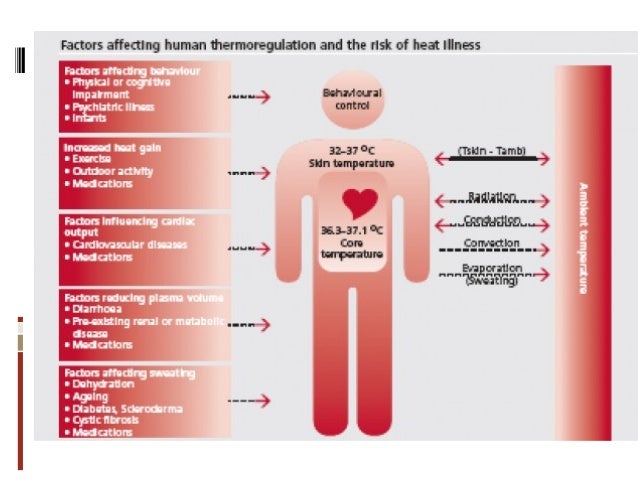
If the fever is due to hormonal causes, such as hot flashes during menopause or a thyroid disorder (hyperthyroidism), these medicines will not work. In such cases, cooling treatments such as rubbing with a damp towel or bathing in cool water help.
As far back as the 1574 dictionary of John Whizels, it was noted that “fasting is an excellent remedy for fever.” But if the recommendation to drink more fluids has an obvious explanation (replenish fluid balance and remove the breakdown products of pathogens from the body), then what about the advice to eat less?
On the one hand, in order to maintain a high temperature, the body needs additional energy, which it can get from food. Fasting also creates additional stress. On the other hand, overeating and eating too spicy, unusual, unfamiliar foods can be harmful. The body may misinterpret certain substances as allergens and provoke a reaction.
Such a method exists. For example, in the middle of the 20th century, the German physician von Ardenne began to use it on cancer patients as a means of “last hope”. The fact is that cancer cells die at temperatures close to 42°C. Von Ardenne was able to heat patients up to 41.8°C. True, no more than 17% of them survived, but they were cured.
The fact is that cancer cells die at temperatures close to 42°C. Von Ardenne was able to heat patients up to 41.8°C. True, no more than 17% of them survived, but they were cured.
The “water” method was used for heating. The patient was placed in a special bath and with the help of water-jet devices placed over the patient, and poured over with heated water. Body temperature should have risen to 42-43°C. This procedure lasted about 6 hours under general anesthesia. The head was cooled with a special helmet. Later in the USSR, the idea of heating with microwaves was developed.
Hyperthermia can help treat cancers that are difficult to operate on (eg, brain, mouth, and neck tumors). Heated tissues are more sensitive to ionizing radiation, which increases the effectiveness of radiotherapy. The problem is that it is not yet possible to concentrate the source of thermal radiation exactly at the site of the tumor without affecting other tissues.
Nevertheless, in recent years, the interest in therapeutic hyperthermia among scientists has been growing due to the development of new technologies. For example, one of the recent ideas involves the use of magnetic nanoparticles that can be injected directly into tumor tissue and heated from the inside using an alternating magnetic field.
For example, one of the recent ideas involves the use of magnetic nanoparticles that can be injected directly into tumor tissue and heated from the inside using an alternating magnetic field.
The remains of Ice Age animals were found in the Tver region
According to the Russian Ministry of Education and Science, bones of Ice Age animals are sometimes found in the channels of ancient rivers, remains of megafauna have been preserved in the Volga deposits
Read the full story
38.6°C temperature: everything you need to know
Content attention
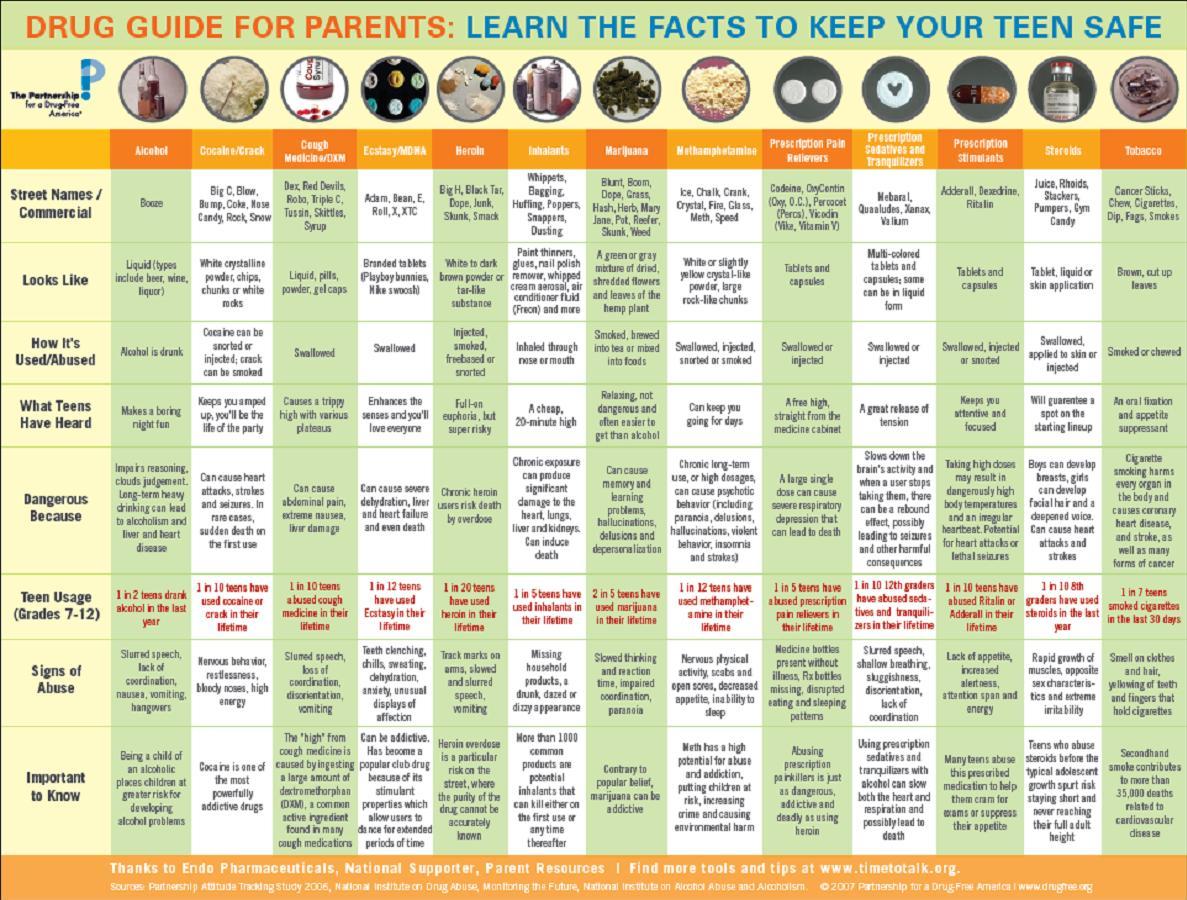 10 Features of the treatment of fever in children
10 Features of the treatment of fever in children- 1.12.0.1 What causes the temperature to rise to 38.6 °C?
- 1.12.0.2 How often should the temperature be measured if it is raised to 38.6 °C?
- 1.12.0.3 Is it possible to lower the temperature to normal when it rises to 38.6 °C?
- 1.12.0.4 Which antipyretics can be taken at 38.6 °C?
- 1.12.0.5 What symptoms may accompany a temperature rise to 38.6 °C?
- 1.12.0.6 When should I see a doctor at 38.6 °C?
Find out why a temperature of 38.6°C can be dangerous, what causes it to rise and what you need to do to lower the thermometer. Useful tips and tricks for maintaining health during illness.
Sometimes the body starts giving us signals that something is wrong. One of these signals is an increase in body temperature. When the thermometer shows 38.6℃ or higher, measures must be taken to prevent possible complications. In this article, we will analyze why the body temperature rises and what to do if you have a temperature of 38.6 ℃.
One of these signals is an increase in body temperature. When the thermometer shows 38.6℃ or higher, measures must be taken to prevent possible complications. In this article, we will analyze why the body temperature rises and what to do if you have a temperature of 38.6 ℃.
Fever: what does it mean?
Normal adult body temperature ranges from 36.5 to 37 ℃. When the temperature rises above this level, one speaks of an elevated temperature. At the same time, the immune system works hard to fight a possible infection or inflammation in the body. However, if the temperature begins to rise significantly, this can lead to undesirable consequences.
Note: This material is for informational purposes only and does not replace professional medical advice. If you have a temperature higher than 38.6 ℃ for a long time or accompanied by other symptoms, be sure to consult your doctor.
High body temperature: when to pay attention
Temperature is one of the indicators of human health, which helps to evaluate the work of the immune system in the fight against diseases. An increase in temperature above 37 ° C is considered a sign of a possible disease. A temperature of 38.6°C is moderate and should be monitored.
An increase in temperature above 37 ° C is considered a sign of a possible disease. A temperature of 38.6°C is moderate and should be monitored.
Some of the causes of fever:
- Acute respiratory infections such as colds, flu or SARS
- Infectious diseases such as sore throat, pneumonia or tonsillitis
- Autoimmune diseases such as rheumatoid arthritis or systemic lupus erythematosus
- Viral infections such as herpes or chickenpox
- Certain drugs such as antibiotics or aspirin 900 76
Each person tolerates fever differently, but the presence of other signs of illness may indicate the need for urgent medical intervention. This can be a severe headache, deterioration in general condition, sore throat or chest pain, cough, weakness, loss of appetite, as well as the appearance of rashes or changes in skin color.
It is important to understand that self-treatment of fever can be dangerous and is not recommended. If the temperature does not decrease after taking antipyretics, then you should seek the help of a doctor to establish the cause and prescribe adequate treatment.
If the temperature does not decrease after taking antipyretics, then you should seek the help of a doctor to establish the cause and prescribe adequate treatment.
Fever: meaning and types
Fever is a symptom that indicates the presence of an inflammatory or infectious process in the body. The temperature of the human body normally ranges from 36.5-37.2 degrees Celsius. When the temperature rises to 38 degrees Celsius and above, we can already talk about the presence of fever.
- Physiological fever – a temporary increase in body temperature, which most often occurs as a result of intense physical activity, high ambient temperature or due to overwork.
- Pathological fever – an increase in body temperature as a result of diseases such as SARS, influenza, infectious diseases, autoimmune diseases and cancer. Pathological fever can be both local, when the temperature is raised only in a certain part of the body, or general, when the whole body becomes hot.

- Subfebrile temperature — a condition in which body temperature fluctuates between 37.2-38 degrees Celsius. This condition can last for many weeks or months and indicate a latent or chronic inflammatory process.
Positive
0%
negative
0%
Causes of temperature 38.6 \ U005CU00B0C
Infectious diseases. A high temperature may indicate the presence of an infectious disease in the body caused by a virus or bacterium. Such diseases lead to an active struggle of the body with the pathogen and an increase in temperature, which helps to speed up the metabolism and increase immunity.
Allergic reactions. Fever may be due to an allergy to a substance. It is part of the immune system’s response to an allergen and is considered the body’s natural defense response.
Taking medications. Some drugs may cause fever. For example, antibiotics can cause a reaction in the body and temporarily raise the temperature. In such cases, you must consult a doctor.
In such cases, you must consult a doctor.
Physical activity. Fever can result from physical activities such as exercising, hiking, swimming in a pool, or simply walking long distances in hot weather. In this case, the temperature rises due to the intensity of sweating and increased metabolism.
Stress. Fever may be due to stress. Activation of the nervous system leads to an increase in metabolism and an increase in temperature, which can cause malaise and weakness.
Symptoms and features of the manifestation of temperature 38.6 \u005Cu00B0C
An increase in body temperature to 38.6 \u005Cu00B0C can serve as a signal of the onset of the disease. One of the first symptoms is a feeling of weakness and dizziness. In the future, severe headaches, pain in muscles and joints may be added.
In addition, due to a rise in temperature, mood swings, apathy, and drowsiness may occur. The body begins to spend a large amount of energy to fight pathogens, so severe fatigue appears.
It is important to note that a temperature of 38.6 \u005Cu00B0C is a symptom and not an independent disease. It is very important to determine the cause of its occurrence in order to start treatment in a timely manner.
- In case of colds, the temperature can be brought down by antipyretics and symptomatic therapy can be carried out.
- Bacterial infections may require a course of antibiotics.
- In case of viral diseases, it is necessary to strengthen the immune system and maintain the general condition of the body.
In any case, it is important to visit a doctor for a correct diagnosis and treatment recommendations.
Does a temperature of 38.6 \u005Cu00B0C affect health?
An elevated body temperature is a sign of hyperthermia, which may indicate the presence of an infectious process or other diseases in the body. This condition causes significant inconvenience and the need for urgent medical intervention.
If the body temperature reaches 38.6 \u005Cu00B0C, then this indicates the presence of moderate hyperthermia. This condition is not critical, but requires monitoring and treatment. Excessively high temperature can lead to complications and worsen the current condition.
When the temperature rises to 38.6 \u005Cu00B0C, it is necessary to drink plenty of fluids, take antipyretics and stay in bed. It is necessary to consult a doctor for additional examinations, identifying the causes of fever and prescribing adequate treatment.
It is important to remember that with an increase in body temperature of 38.6 \u005Cu00B0C or more, you should immediately seek medical help. This condition may indicate a serious illness and require urgent medical attention.
First aid measures for fever
An increase in body temperature of up to 38.6 °C is a sign of the onset of an infectious disease. In this situation, first aid measures must be taken.
- Drink more water . High body temperature can lead to dehydration, so it’s important to keep your body hydrated. It is recommended to drink water, but you can also drink tea or smoothies containing electrolytes.
- Apply cold . You can alleviate the condition by applying cold to the forehead or wrists. This will help lower your body temperature and reduce discomfort. You can also take a cool shower or wrap yourself in a cool towel.
- Take your medicine . With an increase in body temperature, you can take antipyretic drugs recommended by your doctor. However, do not abuse them, as this can adversely affect the body.
If you don’t know the cause of your fever or it lasts more than 2 days, you should see your doctor. In some cases, fever may be a sign of a serious illness.
Fever treatment
Fever is the body’s defense response to external factors such as infection or inflammation.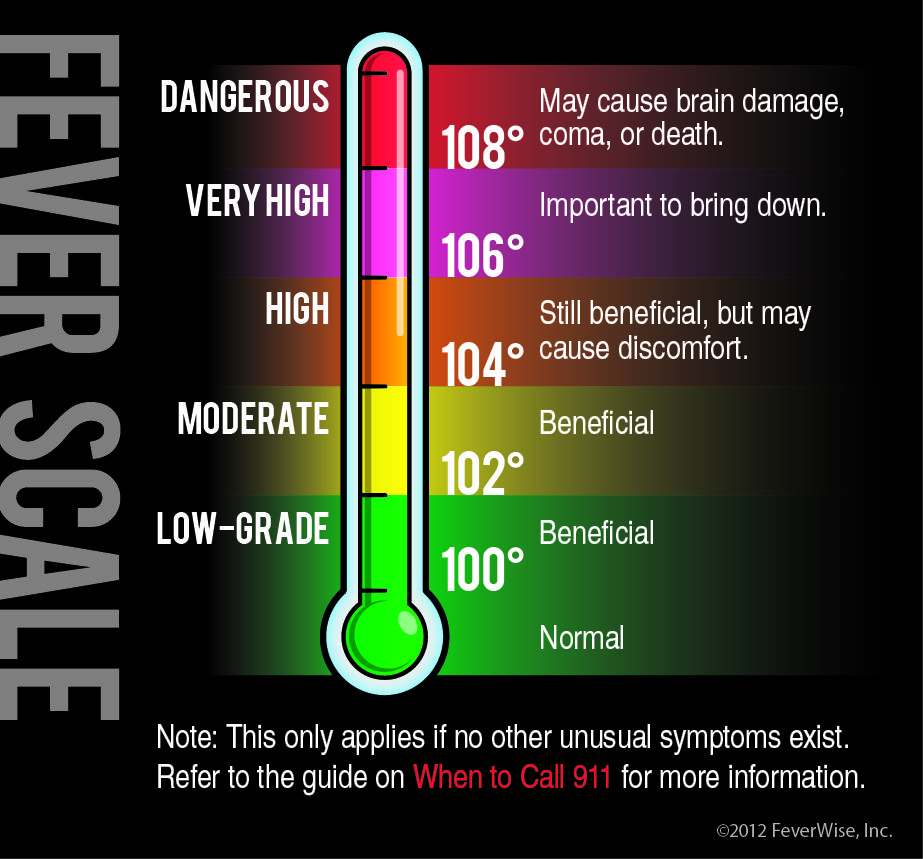 However, when the temperature rises above 38.5°C, unpleasant symptoms appear, such as headache, muscle pain, and general weakness.
However, when the temperature rises above 38.5°C, unpleasant symptoms appear, such as headache, muscle pain, and general weakness.
If the temperature is elevated, the first step should be to drink enough fluids. This will help prevent dehydration in the body. It is also worth staying in bed to avoid additional stress on your body.
Medication may include antipyretics such as paraketamol or ibuprofen. However, you should not abuse the use of antipyretics, as this can lead to side effects.
Some natural products, such as linden blossom tea, raspberry tea, or cranberry juice, can also help reduce fever and general malaise.
- Do not forget to consult a doctor, especially if the fever lasts longer than 3 days or is accompanied by other symptoms.
- In case of fever in children or pregnant women, treatment should only be prescribed by a doctor.
It is important to remember that fever can be a sign of a serious illness and needs attention. Follow your doctor’s recommendations and give preference to natural methods of treatment to avoid unwanted consequences.
Follow your doctor’s recommendations and give preference to natural methods of treatment to avoid unwanted consequences.
When should you see a doctor if you have a fever?
An increase in body temperature is the body’s natural defense mechanism in the fight against an infectious disease. However, in some cases, the temperature can reach 38.6 \u005Cu00B0C and cause some concern.
If fever is accompanied by additional symptoms such as cough, sore throat, headache, this may indicate an acute respiratory illness and a medical examination is required.
Also, you should pay attention to possible signs of complications – shortness of breath, heart rhythm disturbances, seizures and others. If such symptoms are observed, then contacting a doctor should be immediate.
If the fever lasts more than two days and is not associated with any other symptoms, then a doctor’s consultation is required to establish the diagnosis and prescribe appropriate treatment.
- Important: do not try to reduce the temperature yourself without a doctor’s prescription. The use of aspirin and other anti-inflammatory drugs can lead to serious health complications.
Does fever affect pregnancy?
Fever during pregnancy can cause concern for the mother-to-be. However, depending on its causes, this condition may not seriously harm the developing fetus.
A temperature of 38.6 \u005Cu00B0C may be caused by illness, a viral infection, or an acute respiratory infection. In such cases, it is important to immediately consult a doctor and take the recommended medications to prevent possible complications and protect the health of mother and child.
Some studies suggest that fever at the beginning of pregnancy may increase the risk of some fetal malformations, however, more extensive studies have not been conducted on this topic.
So, to protect your baby and yourself, always take care of your health, take care of yourself and your emotions, and see a doctor immediately if you develop any symptoms of illness.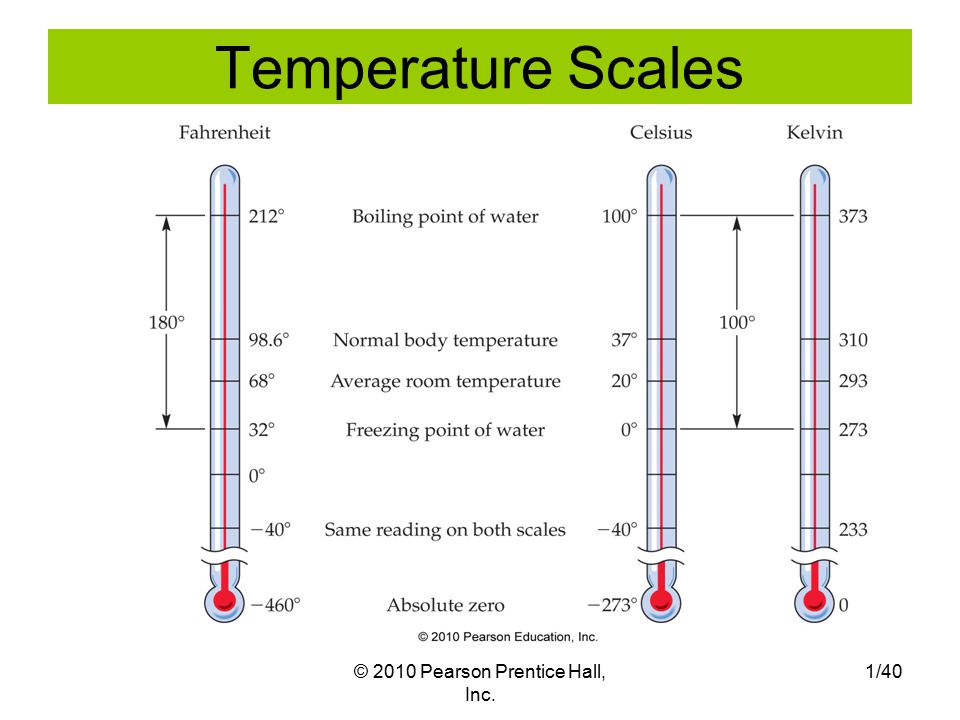
Peculiarities of fever treatment in children
Temperature is a sign that processes are taking place in the child’s body aimed at fighting the disease. If the temperature exceeded 38 degrees, it is necessary to take measures to reduce it.
Before starting treatment, the cause of the fever must be determined. If it is an infectious disease, then antibiotics or antiviral drugs are required. The presence of children in crowded places and physical activity is not recommended.
Along with medicines, it is recommended to take measures to reduce the temperature, such as drinking plenty of fluids, applying cool compresses to the forehead and body, and ventilating the room in which the child is.
- The most important thing in the treatment of fever in children is to monitor the condition and readings of the thermometer.
- In no case should you use water washing below 37 degrees, as this can lead to hypothermia and deterioration of the child’s condition.

- At high temperatures, children should not be given hot or warm food.
Regardless of which treatment methods you use, remember that the most important thing is the timely visit to the doctor and the exact implementation of his recommendations. This is the only way you can quickly and effectively deal with fever in your child.
How can I prevent the temperature from rising to 38.6 °C?
1. Hygiene
Hygiene is essential to avoid illness and possible fever. Washing your hands regularly and using hand sanitizer will prevent viral and bacterial infections.
2. Eat right
Proper and balanced nutrition helps to maintain immunity and strengthen the body. The diet should include fruits, vegetables, cereals, meat and fish.
3. Maintaining a healthy lifestyle
Regular exercise, outdoor activities, giving up bad habits, sleeping at least 7-8 hours a day – all this will help strengthen the body and maintain a high level of immunity.
4. Avoid stressful situations
Stress adversely affects human health, reducing the protective functions of the body. Avoid stressful situations and find ways to deal with them.
5. Get regular medical check-ups
Regular medical check-ups can help you identify possible problems in the body at an early stage. This will allow you to take timely measures and prevent the development of certain diseases.
Q&A:
What causes the temperature to rise to 38.6 °C?
An increase in temperature can be caused by infectious diseases, inflammatory processes, allergic reactions, overload of the body, as well as external factors such as overheating, sunstroke or hypothermia.
How often should the temperature be taken if it is above 38.6 °C?
The frequency of measurements depends on the general condition of the patient and the cause of the fever. If you feel well and this is an isolated case, then it is enough to measure the temperature 2 times a day. If the condition worsens or if other symptoms are present, more frequent measurements are required.
If the condition worsens or if other symptoms are present, more frequent measurements are required.
Is it possible to lower the temperature to normal when it rises to 38.6 °C?
Yes, you can. This requires taking antipyretics, performing cool-down procedures (such as taking cool showers), and drinking plenty of fluids. However, if the fever is caused by an infectious disease, then the treatment should be comprehensive, taking into account the cause.
Which antipyretics can be taken at 38.6 °C?
Antipyretics containing paracetamol or ibuprofen are most effective at 38.6°C. However, you must follow the recommended dosage and do not take these drugs for longer than indicated in the instructions.
What symptoms may accompany a temperature rise to 38.6 °C?
Symptoms may vary depending on the cause of the fever, but most often associated are weakness, headache, muscle and joint pain, loss of appetite, increased sweating, sleep disturbance and others.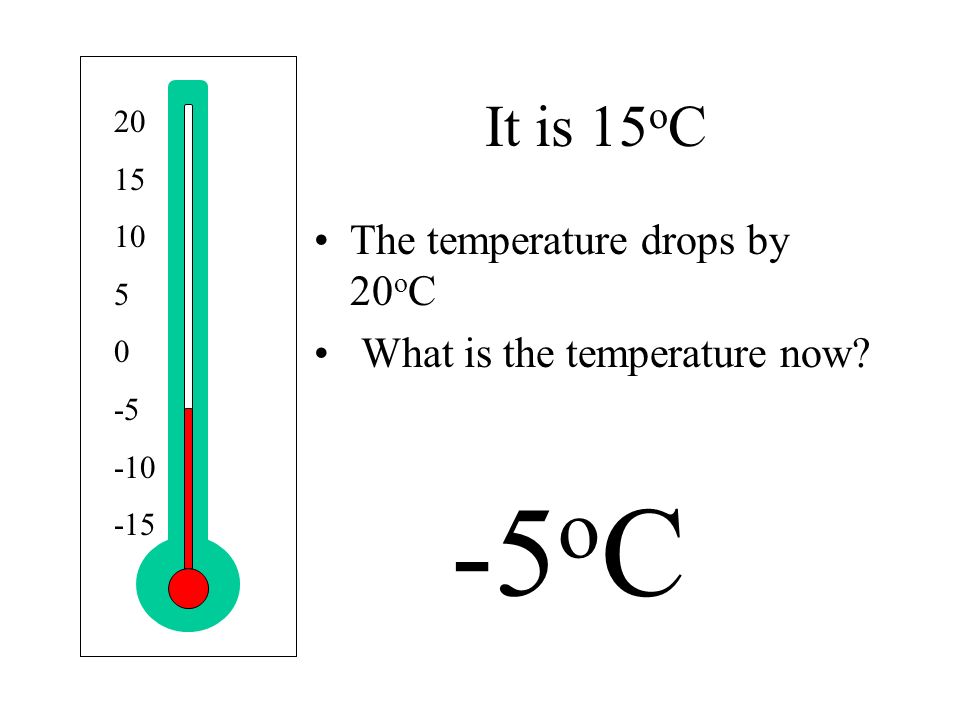
When should I see a doctor at 38.6 °C?
If fever persists for more than 3 days, or symptoms worsen, seek medical attention. In addition, a visit to the doctor is required if the temperature cannot be reduced with antipyretics or if it rises to critical values (39°C and above).
Popular misconceptions about fever
A temperature of 38.6 \u005Cu00B0C often causes people to worry and act unjustified. Instead of panicking, it’s important to know the real facts about high temperatures and not believe the myths.
- A temperature of 38.6 \u005Cu00B0C is always a sign of illness – this is not true. A short-term increase in temperature may be the body’s response to stress, heat, or exercise.
- It is necessary to reduce the temperature at any increase – this is not so. A temperature of 38-39 degrees often allows the body to fight infection, so lowering it can slow recovery.
- High temperature is always dangerous is also a myth.





